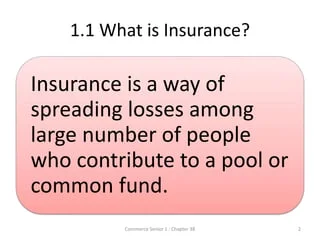Fascination About Pacific Prime
Fascination About Pacific Prime
Blog Article
The smart Trick of Pacific Prime That Nobody is Talking About
Table of ContentsSome Ideas on Pacific Prime You Should KnowSome Of Pacific PrimeHow Pacific Prime can Save You Time, Stress, and Money.The Pacific Prime DiariesPacific Prime - The Facts

This is due to the fact that the data were accumulated for a period of strong economic efficiency. Of the estimated 42 million people that were uninsured, just about regarding 420,000 (concerning 1 percent) were under 65 years of age, the age at which most Americans become eligible for Medicare; 32 million were adults between ages 18 and 65, around 19 percent of all adults in this age; and 10 million were youngsters under 18 years of age, regarding 13.9 percent of all children (Mills, 2000).
These quotes of the variety of individuals without insurance are generated from the annual March Supplement to the Existing Populace Survey (CPS), performed by the Census Bureau. Unless otherwise noted, national estimates of individuals without medical insurance and proportions of the population with various type of coverage are based on the CPS, one of the most extensively used source of quotes of insurance policy coverage and uninsurance rates.
10 Easy Facts About Pacific Prime Explained

Still, the CPS is particularly helpful since it generates yearly quotes fairly swiftly, reporting the previous year's insurance policy protection estimates each September, and because it is the basis for a regular collection of quotes for even more than twenty years, permitting evaluation of trends in coverage with time. For these factors, in addition to the comprehensive use of the CPS in other researches of insurance policy protection that exist in this report, we depend on CPS estimates, with constraints kept in mind.

The estimate of the number of without insurance individuals increases when a population's insurance coverage standing is tracked for a number of years. Over a three-year period starting early in 1993, 72 million people, 29 percent of the U.S. https://www.twitch.tv/pacificpr1me/about. populace, lacked insurance coverage for at the very least one month. Within a single year (1994 ), 53 million individuals experienced at the very least a month without coverage (Bennefield, 1998a)
Six out of every 10 uninsured adults are themselves utilized. Working does enhance the likelihood that one and one's household members will certainly have insurance policy, it is not an assurance. Even participants of families with 2 full time wage earners have virtually a one-in-ten possibility of being without insurance (9.1 percent uninsured rate) (Hoffman and Pohl, 2000).
Pacific Prime Fundamentals Explained
New immigrants represent a significant proportion of individuals without medical insurance. One evaluation has actually attributed a considerable section of the recent growth in the size of the united state without insurance population to immigrants that arrived in the nation in between 1994 and 1998 (Camarota and Edwards, 2000). Recent immigrants (those who came to the United States within the past four years) do have a high rate of being uninsured (46 percent), yet they and their children represent just 6 percent of those without insurance country wide (Holahan et al., 2001).
The relationship between medical insurance and accessibility to care is well established, as documented later in this chapter. Although the connection between health and wellness insurance policy and health and wellness outcomes is neither direct nor simple, a considerable clinical and health services research study literary works web links health insurance policy protection to improved access to care, far better top quality, and boosted personal and populace health and wellness status.
Levels of evaluation for checking out the impacts of uninsurance. This discussion of health and wellness insurance protection focuses primarily on the united state population under age 65 because essentially all Americans 65 and older have Medicare or various other public insurance coverage. Moreover, it focuses particularly on those without any health insurance for any type of length of time.
7 Easy Facts About Pacific Prime Explained
The issues dealt with by the underinsured are in some respects comparable to those dealt with by the uninsured, although they are normally much less serious. Health insurance coverage, however, is neither essential neither enough to get access to clinical services. The independent and straight result of health and wellness insurance protection on access to wellness services is well developed.
Others will get the healthcare they require even without wellness insurance policy, address by paying for it out of pocket or seeking it from service providers who provide care cost-free or at extremely subsidized rates. For still others, health and wellness insurance coverage alone does not guarantee invoice of treatment as a result of various other nonfinancial barriers, such as an absence of health care service providers in their community, restricted accessibility to transportation, illiteracy, or linguistic and social differences.
A Biased View of Pacific Prime
Official research study concerning uninsured populations in the United States dates to the late 1920s and early 1930s when the Board on the Cost of Treatment created a collection of records regarding funding physician office gos to and hospitalizations. This problem came to be significant as the varieties of clinically indigent climbed up throughout the Great Clinical depression.
Report this page